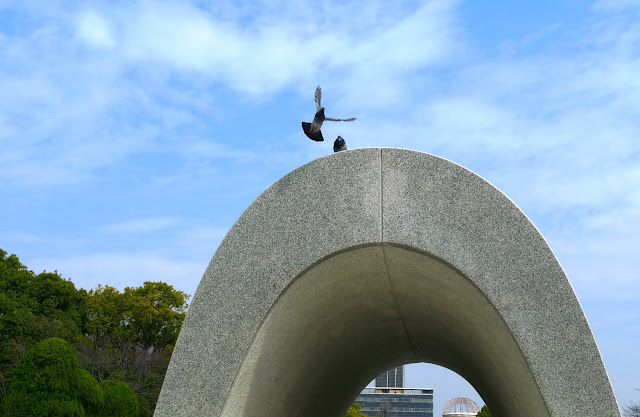'Music for Peace' Project : Hiroshima, Warsaw and Chopin - Akiko's Piano
 | |
|
Music for Peace in Hiroshima 2020
August 5th
and 6th at 18:45 at Hiroshima Bunka Gakuen HBG Hall ,
Hiroshima
Program
Krzysztof
Penderecki: Chaconne from “Polish Requiem “
Dai
Fujikura: Piano Concerto no.4” Akiko’s Piano” (world premiere)
commissioned by
Hiroshima Symphony Orchestra
L.v.Beethoven:
Cavatina from string quartet No. 13 op. 130 ( string orchestra version )
Gustav Mahler:
Kindertotenlieder
J.S. Bach (Hideo Saito’s transcription): Chaconne from Partita No.2 BWV1004
Hiroshima
Symphony Orchestra conducted by Tatsuya Shimono, general music director of
Hiroshima Symphony Orchestra
Mami
Hagiwara , piano solo for Dai Fujikura’s “Akiko’s Piano”
Mihoko Fujimura , mezzo soprano solo for Mahler “ Kindertotenlieder”
* * * * * * * * * *
On a visit to a school in Hiroshima we were shown a remarkably moving and emotional video entitled The Piano That Loved Chopin concerning a venerated object known as Akiko's Piano. It featured diary entries made by a young girl Akiko and interviews connected with those connected to the piano. At this point I would like to interpolate a programme note from the Japanese composer Dai Fujikura who today will 'touch this instrument' for the first time (clearly considered sacred in Hiroshima). When discovered, the unplayable piano was expertly restored by the 'Piano Doctor' Hiroshi Sakaibara
In Hiroshima, there is a piano which survived the atomic bomb, the smashed glass window from the blast is still stuck to the piano’s body. This piano belonged to a 19 year old girl, Akiko.
Akiko was born in LA to Japanese parents. There was a strong friendship, especially in LA, between the Americans and Japanese people before the Second World War.
Akiko got the piano when she was still in America, this piano is also American, Baldwin, made in Cincinnati. When Akiko was 7, she and her parents moved to Japan, to live in Hiroshima.
She kept practicing the piano, having lessons, and when she was 19 year old, while she was working as a mobilized student, the atomic bomb was dropped. She walked and swam as the bridge had already been destroyed, to her home where her parents were that day. Then, the next day, she died in her parents’ arms. Her parents cremated their daughter’s body under a big persimmon tree which still exists today. Her last words were “Mom, I want to have a red tomato.”
Though naturally this concerto will have “music for peace” as its main message, as a composer I like to concentrate on the personal point of view. This microscopic view to tell the universal subject, is the way to go, I feel, in my compositions : the view of Akiko's, ordinary 19 year old girl who didn’t have any power over politics (and she was born in US, which means she was also an American) At the time of her death, she didn’t know what had happened, or what killed her (radiation poisoning, as she didn’t die from the initial blast).
There must be similar stories to that of this 19 year old girl in every war in history and in every country in the world. Every war will have had an “Akiko”.
I am using two pianos in this concerto, one is the main grand piano, then, the cadenza part of this concerto, perhaps at the end of the concerto, Akiko’s Piano, the piano that survived the atomic bomb will be used, played by the soloist.
To express such an universal theme of “music for peace”, the piece should portray that most personal, smallest point of view. I think that is the most powerful way, and only music can achieve this.
Dai Fujikura (edited by Alison Phillips)







This article is a great reminder of the power of music to bring people together and to promote peace. The work of the Music for Peace Project in Hiroshima is truly inspiring. I love the idea of using music to bring together people from different backgrounds and to create a sense of understanding and connection between them. It's a powerful way to show that we all have something in common and to celebrate our shared humanity. This project is a great example of how music can be used to bridge divides and to promote peace and understanding. I also remember that the Music Production Courses In Indiaalso provides a professional service similar to this.
ReplyDelete